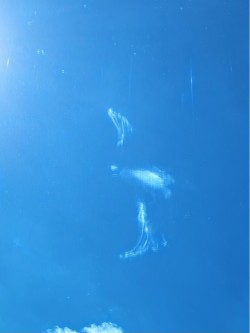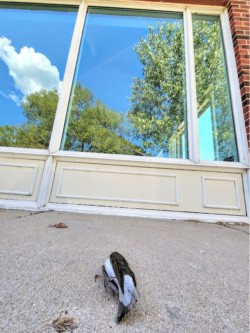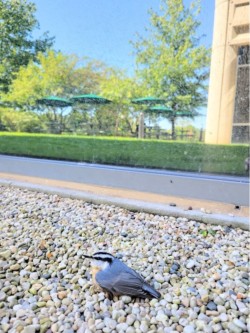Common Questions About Fall Songbird Migration and Window Collisions
Sep 14, 2021
Window collisions are the second leading cause of human-driven bird deaths (behind domestic cats) with up to one billion birds dying from the glass obstacles in their paths every year. While window collisions occur year-round, the majority happen during migration: when birds are tired, hungry, and in unfamiliar areas. Fall migration, peaking in September, records the highest mortality rates of all.
Here are some answers to the questions we get most frequently about this unhappy seasonal phenomenon.
Why do more birds die from glass collisions during fall migration than any other time?
- There are more birds. After a spring and summer filled with songs and courtship and nesting, the new recruits to the population have boosted overall numbers. More birds = more collisions.
- Young birds are naïve and inexperienced. With little knowledge about the world and all of the things in it, they are more likely to fly the wrong way when spooked or chased by a predator. They also haven’t flown the migration path before, which can lead them astray, increase stress, and fatigue and leave them prone to mistakes.

This isn’t a beautiful cloud, but a dust mark that shows where a bird crashed into this window on Aug. 28.
What challenges does this create for property owners?
- There are many negative impacts of window collisions. These increase during migration.
- The bird deaths lead to complaints from employees, residents and visitors and create stress for property managers.
- Many solutions can’t be installed under poor weather conditions; seasonal cold, rain and wind can create delays in efforts to resolve the problem.

A beautiful Swainson’s Thrush died trying to reach the trees reflected in this window Sept. 2.
What can be done to solve the issue?
- Reach out now. Wild Goose Chase has window collision expert biologists on staff. Our Window Collision Assessments include migration season bird surveys to determine the most critical areas of your building to ensure the most effective and cost efficient solutions. Getting your assessment completed now will allow us to provide solutions in plenty of time for the next migration season.
- Lights out! Lights draw night migrating birds and can exhaust and confuse them. Turning off your lights at night during migration can help reduce collisions at your building.
- If you have bird feeders, keep them within 6 feet of the building. Having bird feeders around your building can create collision risks as feeding birds are easily startled into flight. If feeders are more than six feet from the building, fleeing birds can hit windows at a fatal velocity in their attempt to escape.

A lucky survivor went to wildlife rehabilitation on Sept. 4, after mistaking a glass-reflected habitat for the real thing.
The Wild Goose Chase team has decades of experience helping commercial and industrial property owners and managers eliminate their bird conflicts in the most humane and cost-effective manner.
Give our experts a call to learn what you can do to prevent bird collisions at your property. We have a variety of solutions and biologist-led strategies, along with a track record of success across the Midwest.


 0
0
